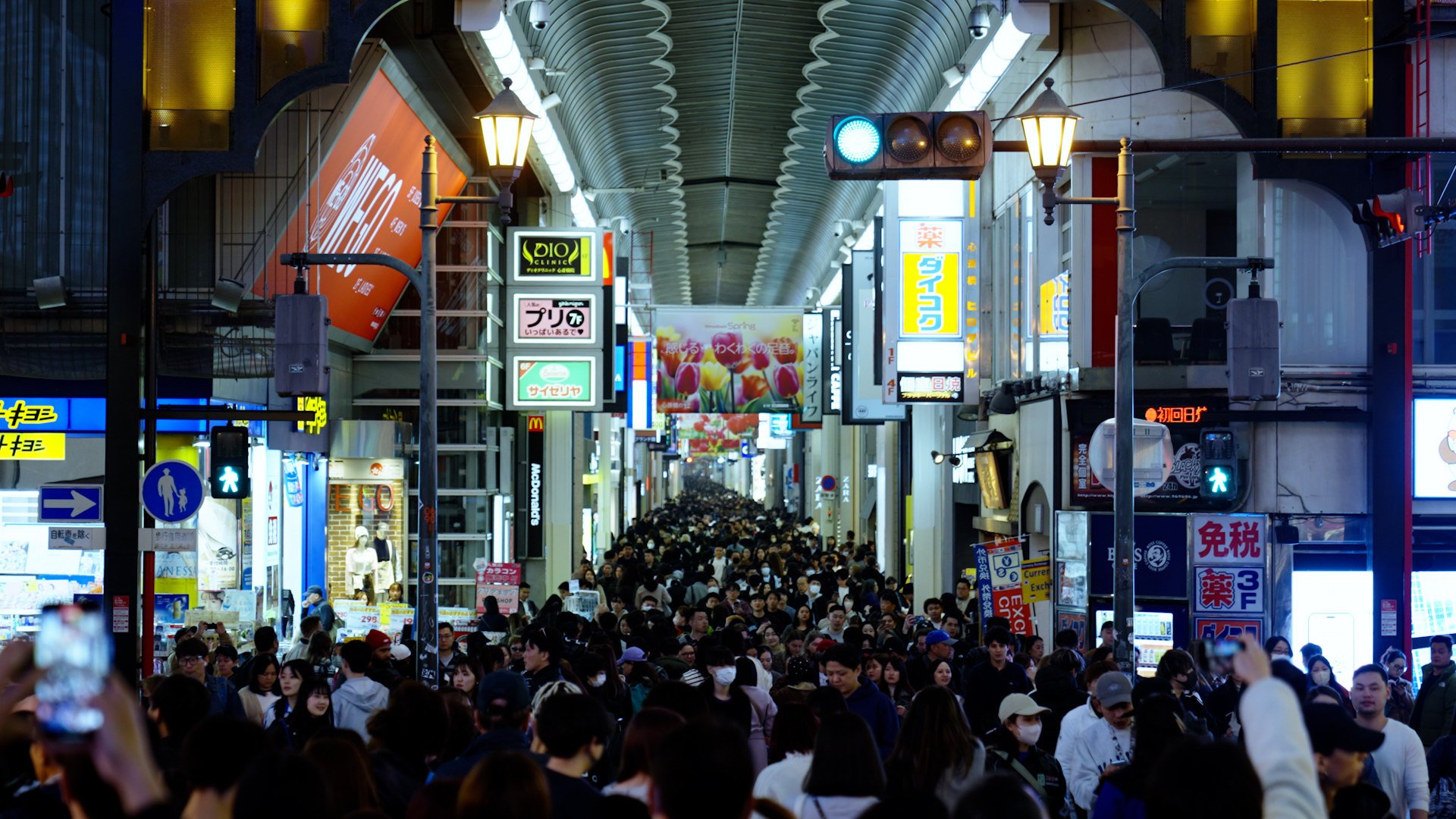Technology
An Interview with Shitong Qiao: The Authoritarian Commons and China’s Neighborhood Democratization
From the Sun Yat-sen republican era to the internationally renowned 1989 Tiananmen Square protests, democratic ideals have run deep in China’s modern history. The possibility of China becoming a democracy has been a recurring question in international journalism and public discourse, captivating generations of social scientists. On the other hand, even the Chinese government has embraced the term democracy through its promotion of the so-called “whole-process people’s democracy” in recent years.
Shitong Qiao, the Ken Young-Gak Yun and Jinah Park Yun Distinguished Professor of Law at Duke University, turns his attention to democracy in the neighborhood, examining how hundreds of millions of Chinese homeowners practice democracy at the community level, in order to understand the intriguing relationship between authoritarianism and democratic practices. In his new book, The Authoritarian Commons: Neighborhood Democratization in Urban China (Cambridge University Press, 2025), Qiao investigates homeowners’ associations in China. Dr. Qiao is also Honorary Professor at the University of Hong Kong and a core faculty member of the Asia/Pacific Studies Institute at Duke University.
Chinese HOAs merit close attention because they reveal a distinctive way of engaging with democracy — what Qiao calls “democracy without liberal commitments.” By comparing HOAs across cities, Qiao extrapolates the conditions under which democratic initiatives can succeed in China. Aliceliu speaks with Dr. Qiao to learn more about democracy in China, and how homeowners’ conditions reflect the possibility of collective action, the role of law, as well as the nuanced nature of democratic practice in the Chinese context.
Alice Liu: Earlier this year, you published a book titled , which examines the tense relationship between the Chinese party-state and democratic homeowners’ associations (HOAs). Could you briefly introduce this book? How did you conduct your research, and what were some of your most important findings?
Shitong Qiao: I started my fieldwork in late 2017 on neighborhood governance in China, focusing particularly on the democratic homeowners’ associations (业主委员会) in the cities of Beijing, Shanghai, and Shenzhen. I heard from my former classmates at Peking University Law School that quite a few of them were actively establishing HOAs. That led me to wonder why these middle- to high-income professionals in Beijing were willing to engage in such voluntary work.
My findings can be summarized in three main aspects. The first is that there has been a homeowner self-governance movement ongoing from the early 2000s until today; it is a lasting democratization movement involving a shift of power—a shift of control of neighborhoods from management companies in alliance with the government to the empowerment of homeowners’ self-government organizations, which the government both relies upon and has tried to bring under control.
HOAs are not merely instruments of government control. They have their own resources, agenda, and autonomy, and the representatives are elected. Homeowners also get a chance to practice democracy, deciding matters based on voting.
The second part of my findings is that there is a great divergence in the level of neighborhood democratization across China. Shanghai has the most successful democratization, with 94% of the neighborhoods having established HOAs. Beijing is the worst—it’s only 12%—and Shenzhen is in between, about 41%.
Lastly, I have identified conditions for successful neighborhood democratization. Not all the neighborhoods in China achieve successful democratization; rather, certain conditions are necessary: a strong state, a strong society, and the rule of law.
AL: Can you elaborate on the three conditions for neighborhood democratization?
SQ: The first condition is what I call a strong state, which could come off as a bit counterintuitive to conventional ideas of democratization. But what I found in this research is that democracy is much more complex in that it requires institutional infrastructure. What I mean by a strong state is that the state government has the administrative capacity to build institutional infrastructure to support HOAs, and to ensure that frontline government officials are following the law and not corrupt or colluding with management companies to repress homeowners. This is the first condition — a strong state.
The second condition is a strong society, meaning civic capacity to mobilize and to negotiate with the state government.
The third element is the rule of law, which I found particularly interesting as a law professor. The process of neighborhood democratization teems with conflicts, both between homeowners themselves and between homeowners and the government, about how to interpret the law. The Shanghai homeowners know how to engage with the government through legal channels to advance their self-governance. The judges in Shanghai have also interpreted the law in a proper way to support HOAs.
AL: How does law play a role in this dynamic? You devoted an entire chapter to discussing the judicial capacity of the HOAs and argue that “local courts in Shanghai are more capable than national authorities and other branches of the Shanghai government in supporting neighborhood democracy”. Can you elaborate on this point?
SQ: China’s civil code, which was passed in 2020, stipulates that for an HOA to pass any resolution, at least two-thirds of all the members of the HOA must participate. Even the participation rate for U.S. elections is only about two-thirds, or even lower in some years. You can see how requiring two-thirds of some random neighborhood in Beijing to participate is a stringent requirement.
It goes without saying that promoting participation carries significant value. For example, if you have 100 members in the neighborhood, 97 of them didn’t participate and three did. Two voted on the matter, and one voted against it. Then two versus one, the resolution gets passed. But what’s the value of that resolution if 97% of the people didn’t participate? The 2020 civil code indeed has a rationale to require two-thirds participation. In the meantime, however, it has not taken into consideration the extreme difficulty of getting two-thirds of the homeowners to engage. Many people are simply too busy to participate in the HOAs.
While this legislative intent has its own considerations, it has dramatically increased the cost of decision-making for homeowners. There’s a trade-off between requiring a high participation rate and the functioning of the HOA. In many cases, the HOA participation rate was only one-half or a little bit more than one-half. Following the Civil Code strictly would mean many of the HOAs in Shanghai simply wouldn’t be able to pass any resolutions. The Civil Code significantly undermines the effectiveness of HOAs.
AL: How did the homeowners overcome this challenge then?
SQ: What happens in Shanghai is that the HOAs found a middle-ground solution. Each HOA has a charter, a foundational document that I call the “mini constitution” of the neighborhood. For that charter or constitution, they have to satisfy the requirement of two-thirds participation. But in the charter, homeowners put forth a strikingly different definition of participation. Once the ballots are distributed to each household and acknowledged, even if residents do not cast their votes, this is still counted as participation.
Even if they don’t vote, that wouldn’t inhibit the HOA from making any decisions. The controversy is, naturally, whether HOAs can define the term “participation” differently from the Civil Code. There was a dispute exactly about the validity of such an HOA resolution. Then the Shanghai judicial system found a way to interpret the Civil Code in conjunction with the HOAs’ new interpretation, by referring to articles in the Civil Code about private autonomy and implicit consent. I managed to interview the judge who issued the decision.
The Shanghai judicial decision said that if all the homeowners had agreed upon this definition of participation at the beginning, at the founding of the HOA, then that’s consistent with the Civil Code’s requirement and the spirit of private autonomy.
It was judicial craftsmanship, an elaborate approach in overcoming the tension between the new Civil Code and the local HOAs’ autonomy. That success was essential because otherwise most HOAs in Shanghai would be rendered dysfunctional.
In the meantime, the Shanghai court also made it clear that the new definition of participation needed to be passed by the majority of the homeowners first, not just by a small portion of the homeowners. And secondly, homeowners also need to protect minority rights so as to avoid the “tyranny of the majority”.
That’s how the rule of law, particularly the judicial branch in Shanghai, has played a crucial role in supporting neighborhood democracy, but without sacrificing the protection of individual rights, particularly minority groups.
AL: That was fascinating. According to your findings, what are the benefits HOAs have for the party-state?
SQ: The benefits are clear. Managing neighborhood affairs can be a very complicated and tedious job, covering everything from parking to trash collection, to security. And yet it is crucial. There’s data about what urban residents in China complain about the most in the past two decades, and when people complain or petition to the government, neighborhood management issues tend to top the list.
So the state needs to make sure that neighborhoods are governed well. Hiring people to do it in each neighborhood would necessitate a huge budget, financially almost impossible. If the homeowners can govern the neighborhoods by themselves, it gets the job done and wouldn’t cost the government a penny.
In the early 2000s, the Shanghai city government articulated this approach, called “co-governance,” to grant autonomy to people to manage their neighborhood affairs. It relieves the government of the burden of governance and increases governance legitimacy and effectiveness. So that’s the benefit.
AL: Conversely, what risks do HOAs pose to the party-state?
SQ: The risk lies in the fact that HOAs are democratic organizations. Homeowners have their own independent agenda and independent decision-making process. The interests of the HOAs and the government overlap in effective neighborhood governance. But there are multiple challenges to this goal. Firstly, if the HOAs take complete control over neighborhood territories, then the state’s authority is weakened.
With the advent of HOAs, the state loses control over neighborhoods in the heart of major cities, and the government strongly disfavors this. I analyzed the legislative history in my book. In 2003, the State Council, which is the central government in China, promulgated the first property management regulation. And in this regulation, for the first time, it recognized the legitimacy of HOAs. But back in the process of discussing the draft of this regulation, the Ministry of Civil Affairs objected to the idea of HOAs. This is because the Ministry of Civil Affairs was in charge of the residents committees (居民委员会).
AL: What is the difference between the residents committees (居民委员会) and the homeowners associations(业主委员会)?
SQ: Simply put, residents committees are organizations sanctioned in the Chinese constitution and also the Organic Law of the Residents Committees. Residents committees, composed mostly of state employees rather than elected members, are strictly controlled by the party-state.
The HOAs, by contrast, are purely private organizations based on property law and the civil code. HOAs are truly autonomous and independent. Residents committees are affiliated with the party-state, constituting the lowest level of the party-state bureaucratic structure.
Going back to my discussion about the legislative history, the Ministry of Civil Affairs, which was in charge of the residents committees, objected to the idea of HOAs, seeing it as something that would eventually replace the residents committees.
Back then, in 2003, the Chinese real estate sector was just taking off. The government was eager to make people buy apartments. When people pay astronomical figures for apartments, they expect property management as part of the service. As the interest in supporting real estate development came first at the time, the State Council was on the side of the Department of Housing and Construction. That’s why the HOAs were legalized in China in 2003. But that legislative history shows us that the government was deeply aware from the very beginning of the HOAs’ potential threat to state power. So that’s the first challenge, which is fundamental.
The second question is whether if homeowners take control over their own neighborhoods, once they have had a taste of democracy, they will inevitably think about issues beyond their neighborhoods. That’s a phenomenon in the U.S. but also in China, called “not in my backyard” (NIMBY). Say if the government wants to build a railroad or a chemical plant near their neighborhood. These homeowners, united and organized now, have the capacity to protest these public construction projects. HOAs can also challenge the government on issues extending beyond neighborhood governance. I have discovered in my book that there are now a lot of inter-neighborhood associations, citywide, and even nationwide networks of HOAs, something that the party-state is probably very cautious about.
The government’s third worry is the possibility of homeowners extending activism into other arenas. The deal between the HOAs and the government is to say HOAs are going to focus on property management, a very narrow and apolitical issue. But when homeowners get united, they can also potentially move on to protest or to challenge government policies in other areas—areas that can be very far removed from the issue of property management.
AL: Could you share any examples of this?
SQ: In the last chapter of my book I discussed a group of lawyers from the Beijing Bar Association who specialized in organizing homeowners and were inspired by HOAs. They gambled that they, too, could succeed in pushing the government to implement and respect the rights on paper.
This group of lawyers sought to mobilize lawyers in Beijing and tried to have a democratic election in the Beijing Bar Association. That effort was eventually stopped by the Chinese government, as the CCP found mobilization of tens of thousands of lawyers in Beijing intolerable. But this suggests that the homeowners’ situation can have a spillover effect not only from neighborhoods to beyond neighborhoods, but also from property management to more politically sensitive issues.
AL: Building off that, how does the party-state counter these challenges and reduce the risks presented by HOAs?
SQ: Before 2017, the Central Committee of the Chinese Communist Party and the State Council didn’t really have a well-formulated policy. But in 2017, for the first time since the market-oriented reforms, a document was jointly issued by the Central Committee of the Chinese Communist Party and the State Council. It addressed neighborhood governance, including how to respond to the challenges and the opportunities brought up by the HOAs.
The approach, put simply, is to “have the cake and eat it too.” The government officials seek to enjoy HOAs’ benefits, but they also want to control the HOAs and contain the spillover effect. One control mechanism I talked about in my book is very intuitive: a requirement of a certain percentage of CCP members on the HOA board. A party majority in the HOA, or an established party branch in the HOA, appeared to the CCP government as a plausible way to exercise its leadership within the HOAs.
AL: Were they successful in doing that?
SQ: I don’t have comprehensive data, but I did find that in both big cities—Beijing, Shanghai, Shenzhen—and in smaller cities like Yinchuan in Ningxia Province or Huizhou in Guangdong Province (next to Shenzhen), there are homeowners challenging such a requirement, both publicly and legally. Yet these dissenters don’t see themselves as opposing the party’s leadership but are acting out of practical concerns.
The overall percentage of Party members in the entire population is less than 10%. Furthermore, many party members have busy jobs either in the government or in market entities, and running neighborhood governance affairs doesn’t appear extremely enticing. These homeowners argue that the party member percentage requirement is, in most cases, impossible to satisfy, which would again make many HOAs, if not all, dysfunctional.
More importantly, they challenge the legality of local regulations both in courts and through legality review. In China, the National People’s Congress Standing Committee and local people’s congress standing committees oversee reviewing the legality of local government documents. So in Huizhou, a homeowner initiated this legality review with the people’s congress system, on the legal basis that the right to self-governance of HOAs is a private right protected by the Civil Code, which makes no mention of party membership.
The party membership requirement is, he contended, a political demand and has no legal basis. It is an encroachment upon individual private rights and ought to be invalidated. The Huizhou city government was forced to abolish this requirement eventually. I found his legal argument compelling.
AL: That’s very powerful. You mentioned work for the HOA is unpaid. What incentivizes homeowners to do this?
SQ: For most Chinese households, the most important asset is their house. I believe that homeowners’ primary motivation is first and foremost not political, but rather about the value of their property. In my interviews, I was told multiple times that the establishment of HOAs is instrumental in keeping property values.
That material consideration gives people a very direct incentive to invest in neighborhood management. And to uphold proper management, collective entities are necessary, without which individual residents can’t hold management companies accountable. So one could say that they are compelled to associate.
AL: You mentioned how the rate of HOA establishment varies significantly across Shenzhen, Shanghai, and Beijing. How do you account for these differing degrees of local empowerment, and what do the stories of these cities have to teach us?
SQ: This very much relates back to what I identified as the three conditions of successful neighborhood democratization: strong state, strong society, and rule of law.
Firstly, the approach of the government is very different. In the early 2000s, the Shanghai city government formulated an approach to discipline and incentivize frontline government officials to support HOAs. In Beijing, the city government didn’t have a strategy, so the Beijing frontline officials were quite corrupt, often in collusion with property management companies. Or they just disliked the idea of homeowners getting mobilized and changing the status quo, viewing them as troublemakers. They were very suppressive against HOA mobilization.
Shenzhen exhibits what I call a case of “fragmented authoritarianism.” Some departments are in support of HOAs, while others are against neighborhood democratization. It’s kind of fragmented mostly because Shenzhen was developing so fast.
I have a table in the book talking about the density of government, namely a measurement of each residents committee, the size of the governing territory, and the population. Shanghai has the highest density of government among the three cities, which I took as evidence of state capacity.
The second lesson has to do with whether homeowners are capable of mobilization and formulating a proper strategy of expanding their power. The Shanghai homeowners adopted a very legalistic approach because they believe the law is what the government and the people can agree upon and can use to make a deal. But in Beijing, the homeowners got highly politicized. Many of the activists I interviewed took the neighborhood as the basis for regime-level democratization. It went a bit too far. That made the government in Beijing very cautious and very hostile toward these people because they did not only want to change neighborhood governance—they wanted large-scale change, which would not be tolerated by the city government in Beijing.
AL: You repeatedly used the phrase that the government wants to “have their cake and eat it too.” My question is: has it succeeded?
SQ: The government has been quite successful in containing the spillover effect from property management to more politically sensitive issues. There are still some very active political activists who want to use neighborhoods as a foundation for state-level democratization, but they have been marginalized.
Most homeowners’ activists I’ve talked to are very cautious. They frame their agenda as being beneficial not only for themselves but also for the government: “We are doing this to serve both our interests and those of the state.” In that sense, the government has been successful.
On the other hand, the state’s efforts to take direct control—for example, by establishing Party branches—have been far less effective than those in private enterprises or Chinese multinationals. Homeowners’ successful resistance to Party branch establishment is quite remarkable.
The party-state has not succeeded in turning homeowners’ associations (HOAs) into a tool of social control. HOAs have managed to preserve their independence, status, and agenda.
And lastly, I think the government is not able to stop that, and Chinese citizens get a chance to practice democracy in their daily lives, which is hard to come by. But that’s the point again: in the long run, I do think that the practice of democracy is going to promote and nurture the consciousness of law and the consciousness of democracy among a large group of Chinese citizens. That impact is not immediate, but in the long run, it can be extremely meaningful.
AL: Thank you so much. Lastly, how does your research contribute to our understanding of democracy in China?
SQ: First, we need a more subtle, realistic, and pragmatic understanding of democracy under the Chinese regime. One key lesson is that there is a real demand for democracy—not only from citizens but also from the government.
This is a form of “democracy without committing to liberal values.” People come together to make decisions on common affairs through democratic procedures. This doesn’t mean they are committed to separation of powers or human rights—those liberal ideologies play little role in neighborhood-level democracy. So, if one is interested in promoting democratic reforms in China, these pragmatic realities must be taken into account.
Think again about the three conditions for successful democratization: a strong state, a strong society, and the rule of law. These conditions point toward possible national democratization in China, which the book has not yet explored.
Democratization is not simply about taking power away from the government and giving it to the people. In places like Taiwan and South Korea, it emerged from the backdrop of strong and successful authoritarian leadership—for example, under Chiang Ching-kuo. This aligns with my emphasis on strong state as a condition for successful democratization. The rule of law, particularly the role of courts in mediating between state and society, also helps avoid direct clashes.
Right now, the political atmosphere is far from ideal for reforms. But we must take the long-term view. What this book tells us is the importance of cultivating democratic citizens—shaping their minds and hearts. Politics has its highs and lows, but preparing citizens to practice democracy in their everyday lives is essential for an orderly transition to a more inclusive society.

















